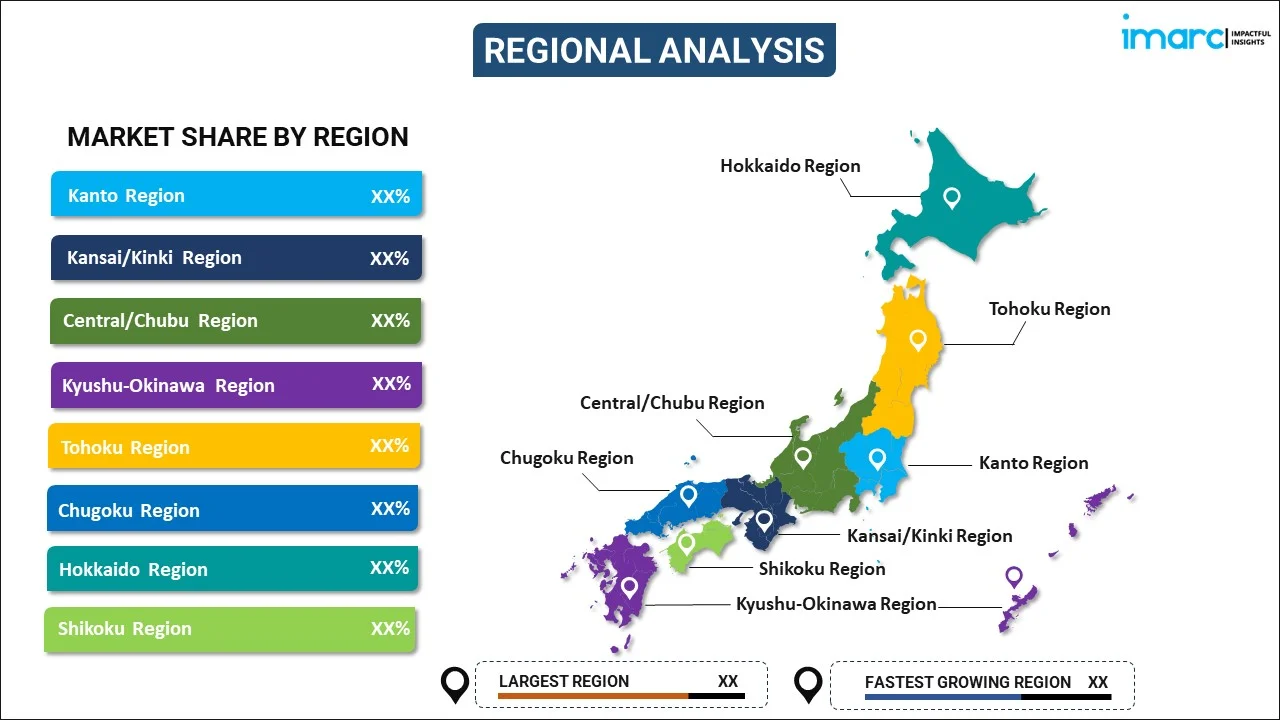
Japan Green Cement Market Report by Product Type (Fly Ash-Based, Slag-Based, Limestone-Based, Silica Fume-Based, and Others), End Use Industry (Residential, Non-Residential, Infrastructure), and Region 2025-2033
Market Overview:
Japan green cement market size reached USD 1.9 Billion in 2024. Looking forward, IMARC Group expects the market to reach USD 2.4 Billion by 2033, exhibiting a growth rate (CAGR) of 2.57% during 2025-2033. The increasing awareness of climate change and environmental degradation, which has led to a greater emphasis on sustainable construction practices, is primarily driving the green cement market.
|
Report Attribute
|
Key Statistics
|
|---|---|
|
Base Year
|
2024 |
|
Forecast Years
|
2025-2033 |
|
Historical Years
|
2019-2024
|
| Market Size in 2024 | USD 1.9 Billion |
| Market Forecast in 2033 | USD 2.4 Billion |
| Market Growth Rate (2025-2033) | 2.57% |
Green cement, also known as sustainable or eco-friendly cement, is an innovative building material designed to reduce the environmental impact of traditional cement production. Conventional cement manufacturing is energy-intensive and contributes significantly to carbon dioxide emissions, a major driver of climate change. In contrast, green cement aims to address these issues by employing more sustainable production methods. One approach to green cement involves using alternative materials or industrial byproducts such as fly ash, slag, or rice husk ash to replace some of the traditional clinker content in cement production. These materials often have lower carbon footprints and can reduce energy consumption during manufacturing. Additionally, green cement can be produced using energy-efficient kilns and environmentally friendly binders. Green cement not only lowers carbon emissions but also enhances durability and strength, making it a suitable option for construction projects. Its adoption is essential to combat climate change and achieve sustainability goals in the construction industry, reducing the sector's overall environmental impact while maintaining the quality and safety of structures.
Japan Green Cement Market Trends:
The green cement market in Japan is poised for significant growth, primarily driven by a confluence of factors. Firstly, increasing environmental awareness has led to a growing demand for sustainable construction materials. Moreover, stringent regulations aimed at reducing carbon emissions in the construction industry have prompted a shift towards greener alternatives. Additionally, the rising cost of traditional cement production has made green cement an attractive economic option. Furthermore, the construction sector's burgeoning regional demand, particularly in emerging economies, has fueled the need for eco-friendly building materials like green cement. Furthermore, technological innovations in cement production processes, such as the incorporation of alternative materials like fly ash, slag, and geopolymer, which have reduced the environmental footprint of cement manufacturing, are expected to drive the green cement market in Japan during the forecast period.
Japan Green Cement Market Segmentation:
IMARC Group provides an analysis of the key trends in each segment of the market, along with forecasts at the country level for 2025-2033. Our report has categorized the market based on product type and end use industry.
Product Type Insights:

- Fly Ash-Based
- Slag-Based
- Limestone-Based
- Silica Fume-Based
- Others
The report has provided a detailed breakup and analysis of the market based on the product type. This includes fly ash-based, slag-based, limestone-based, silica fume-based, and others.
End Use Industry Insights:
- Residential
- Non-Residential
- Infrastructure
A detailed breakup and analysis of the market based on the end use industry have also been provided in the report. This includes residential, non-residential, and infrastructure.
Regional Insights:

- Kanto Region
- Kansai/Kinki Region
- Central/ Chubu Region
- Kyushu-Okinawa Region
- Tohoku Region
- Chugoku Region
- Hokkaido Region
- Shikoku Region
The report has also provided a comprehensive analysis of all the major regional markets, which include Kanto Region, Kansai/Kinki Region, Central/ Chubu Region, Kyushu-Okinawa Region, Tohoku Region, Chugoku Region, Hokkaido Region, and Shikoku Region.
Competitive Landscape:
The market research report has also provided a comprehensive analysis of the competitive landscape in the market. Competitive analysis such as market structure, key player positioning, top winning strategies, competitive dashboard, and company evaluation quadrant has been covered in the report. Also, detailed profiles of all major companies have been provided.
Japan Green Cement Market Report Coverage:
| Report Features | Details |
|---|---|
| Base Year of the Analysis | 2024 |
| Historical Period | 2019-2024 |
| Forecast Period | 2025-2033 |
| Units | Billion USD |
| Scope of the Report | Exploration of Historical and Forecast Trends, Industry Catalysts and Challenges, Segment-Wise Historical and Predictive Market Assessment:
|
| Product Types Covered | Fly Ash-Based, Slag-Based, Limestone-Based, Silica Fume-Based, Others |
| End Use Industries Covered | Residential, Non-Residential, Infrastructure |
| Regions Covered | Kanto Region, Kansai/Kinki Region, Central/ Chubu Region, Kyushu-Okinawa Region, Tohoku Region, Chugoku Region, Hokkaido Region, Shikoku Region |
| Customization Scope | 10% Free Customization |
| Post-Sale Analyst Support | 10-12 Weeks |
| Delivery Format | PDF and Excel through Email (We can also provide the editable version of the report in PPT/Word format on special request) |
Key Questions Answered in This Report:
- How has the Japan green cement market performed so far and how will it perform in the coming years?
- What has been the impact of COVID-19 on the Japan green cement market?
- What is the breakup of the Japan green cement market on the basis of product type?
- What is the breakup of the Japan green cement market on the basis of end use industry?
- What are the various stages in the value chain of the Japan green cement market?
- What are the key driving factors and challenges in the Japan green cement?
- What is the structure of the Japan green cement market and who are the key players?
- What is the degree of competition in the Japan green cement market?
Key Benefits for Stakeholders:
- IMARC’s industry report offers a comprehensive quantitative analysis of various market segments, historical and current market trends, market forecasts, and dynamics of the Japan green cement market from 2019-2033.
- The research report provides the latest information on the market drivers, challenges, and opportunities in the Japan green cement market.
- Porter's five forces analysis assist stakeholders in assessing the impact of new entrants, competitive rivalry, supplier power, buyer power, and the threat of substitution. It helps stakeholders to analyze the level of competition within the Japan green cement industry and its attractiveness.
- Competitive landscape allows stakeholders to understand their competitive environment and provides an insight into the current positions of key players in the market.
Need more help?
- Speak to our experienced analysts for insights on the current market scenarios.
- Include additional segments and countries to customize the report as per your requirement.
- Gain an unparalleled competitive advantage in your domain by understanding how to utilize the report and positively impacting your operations and revenue.
- For further assistance, please connect with our analysts.
 Inquire Before Buying
Inquire Before Buying
 Speak to an Analyst
Speak to an Analyst
 Request Brochure
Request Brochure
 Request Customization
Request Customization




.webp)




.webp)












